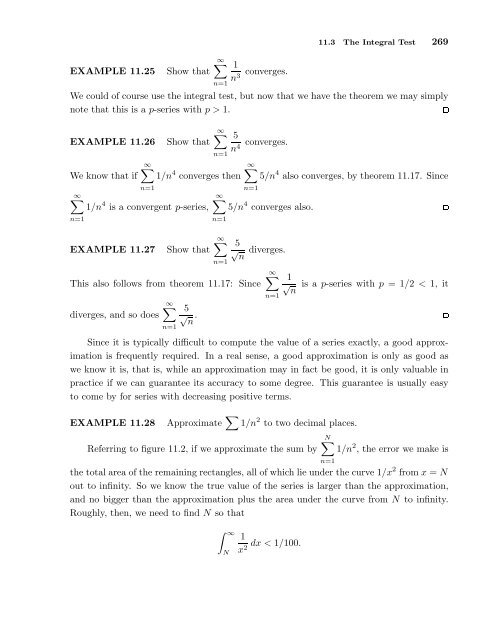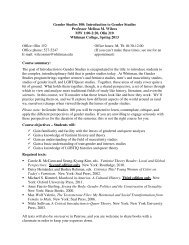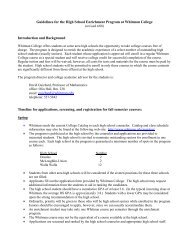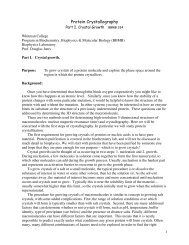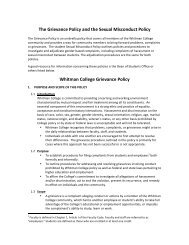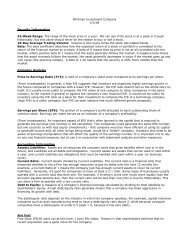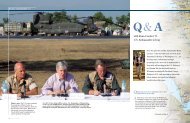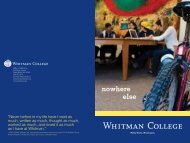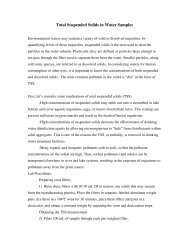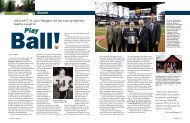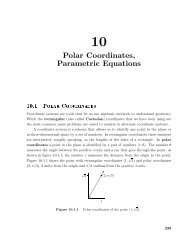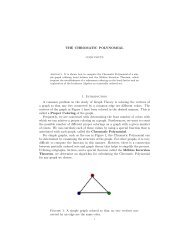Sequences and Series
Sequences and Series
Sequences and Series
Create successful ePaper yourself
Turn your PDF publications into a flip-book with our unique Google optimized e-Paper software.
EXAMPLE 11.25 Show that∞∑n=11n 3 converges.11.3 The Integral Test 269We could of course use the integral test, but now that we have the theorem we may simplynote that this is a p-series with p > 1.EXAMPLE 11.26 Show thatWe know that if∞∑n=1∞∑1/n 4 converges thenn=1∞∑1/n 4 is a convergent p-series,n=1EXAMPLE 11.27 Show that5n 4 converges.∞∑5/n 4 also converges, by theorem 11.17. Sincen=1∞∑5/n 4 converges also.n=1∞∑n=15√ ndiverges.This also follows from theorem 11.17: Sincediverges, <strong>and</strong> so does∞∑n=15√ n.∞∑n=11√ nis a p-series with p = 1/2 < 1, itSince it is typically difficult to compute the value of a series exactly, a good approximationis frequently required. In a real sense, a good approximation is only as good aswe know it is, that is, while an approximation may in fact be good, it is only valuable inpractice if we can guarantee its accuracy to some degree. This guarantee is usually easyto come by for series with decreasing positive terms.EXAMPLE 11.28 Approximate ∑ 1/n 2 to two decimal places.N∑Referring to figure 11.2, if we approximate the sum by 1/n 2 , the error we make isthe total area of the remaining rectangles, all of which lie under the curve 1/x 2 from x = Nout to infinity. So we know the true value of the series is larger than the approximation,<strong>and</strong> no bigger than the approximation plus the area under the curve from N to infinity.Roughly, then, we need to find N so that∫ ∞N1dx < 1/100.x2 n=1


